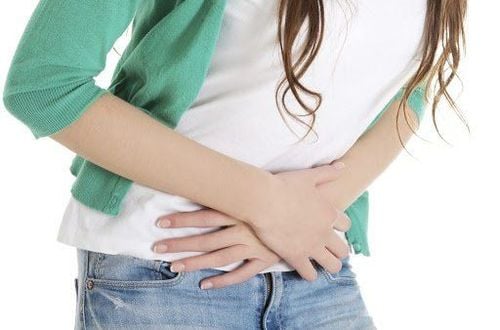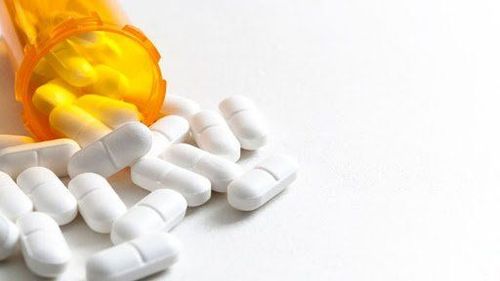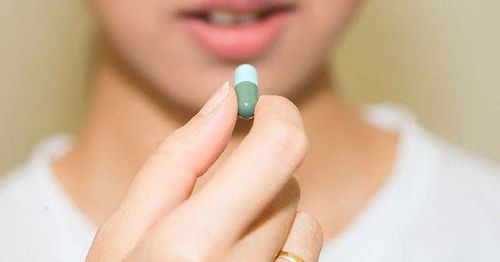Lodine, a non-steroidal anti-inflammatory drug (NSAID), is widely used in clinical practice. However, improper use may lead to significant side effects. This guide outlines the effects, usage, and potential side effects of Lodine.
1. What is the Effect of Lodine?
Lodine contains the active ingredient Etodolac, which is primarily used for pain relief in various conditions. It is particularly effective in alleviating pain, swelling, and stiffness associated with arthritis.
This medication works by blocking the production of certain natural substances in the body that cause inflammation. If the patients are managing a chronic condition like arthritis, it’s important to discuss non-drug treatments and other pain management options with their physician before starting Lodine.
2. How to use Lodine
Take Lodine orally as prescribed by the physician, typically 2 or 3 times a day with a large glass of water (approximately 240 ml). After taking the medication, remain upright for at least 10 minutes. To minimize the risk of stomach upset, take Lodine with food or antacids.
Dosage varies based on the pain level and individual response to the medication. To reduce the risk of gastric bleeding and other side effects, take Lodine at the lowest effective dose for the shortest duration possible. Do not increase the dosage or frequency without consulting the healthcare provider.
If being treated for chronic arthritis, continue taking Lodine as directed. For intermittent use, it’s best to take pain relievers at the first sign of pain; waiting until the pain worsens may reduce its effectiveness.
For diseases like arthritis, it may take up to two weeks of consistent use to experience the full benefits of Lodine.
3. Side effects of the drug Lodine
Using NSAIDs, including Lodine, may increase the risk of heart attack or stroke. This risk is present at any time during treatment but is heightened with long-term use, especially in older adults or those with existing heart conditions or risk factors (e.g., smoking, family history of heart disease, high blood pressure, or diabetes). Avoid taking Lodine just before or after coronary artery bypass graft (CABG) surgery.
Lodine may also lead to serious gastrointestinal bleeding (but rarely causes death), which may occur without warning, particularly in older adults.
Stop taking Lodine and seek emergency medical attention if any of the following serious side effects occur:
- Black or tarry stools
- Persistent stomach or abdominal pain
- Vomit resembling coffee grounds
- Chest pain radiating to the jaw or down the left arm
- Shortness of breath
- Unusual sweating
- Confusion
- Weakness on one side of the body, difficulty speaking, or sudden vision changes

Talk to the physicians or pharmacist about the benefits and risks of using Lodine.
Other common side effects of Lodine may include:
- Abdominal discomfort
- Nausea
- Diarrhea
- Drowsiness
- Dizziness
If these side effects persist or worsen, immediately contact the physicians or pharmacist.
Lodine may cause hypertension; therefore, blood pressure should be monitored regularly, and physicians should be informed of any high readings.
Other less common but serious side effects include:
- Easy bruising or bleeding
- Difficulty or painful swallowing
- Hearing changes (e.g., ringing in the ears)
- Mental or mood changes
- Signs of kidney problems (e.g., changes in urination)
- Unexplained stiff neck
- Vision changes
- Symptoms of heart failure (e.g., swelling in ankles/feet, unusual fatigue, sudden weight gain)
Lodine may also lead to serious liver disease (which may be fatal). Contact the physician immediately if any symptoms of liver damage occur, such as dark urine, persistent nausea, loss of appetite, stomach pain, or yellowing of the skin and eyes.
4. Precautions when using Lodine
Before starting treatment with Lodine, the patient needs to inform their physician about any history of allergies to etodolac, aspirin, or other NSAIDs (such as ibuprofen, naproxen, or celecoxib) and any other allergic conditions. Lodine may contain inactive ingredients that could trigger allergic reactions or other issues.
Patients should inform their physician and pharmacist about their medical history, particularly:
- Asthma (especially if there is a history of worsening breathing after taking aspirin or other NSAIDs)
- Blood diseases (such as anemia or blood clotting disorders)
- Nasal polyps
- Cardiovascular diseases (such as previous angina)
- High blood pressure
- Liver disease
- Stroke
- Digestive problems (such as bleeding, heartburn, or ulcers)
Kidney problems may sometimes arise from using NSAIDs, including Lodine. This is more likely to occur if the patient is dehydrated, has heart failure, has a history of kidney disease, is elderly, or is taking certain medications.
Lodine may also cause gastric bleeding. Daily consumption of alcohol and tobacco—especially in combination with this medication—may increase the risk of bleeding. Therefore, patients should limit alcohol intake, refrain from smoking, and consult their physician or pharmacist for more information. Additionally, Lodine may increase sensitivity to sunlight. To protect against this, patients should limit sun exposure, avoid tanning, apply sunscreen daily, and wear protective clothing when outdoors.
Older adults are at a higher risk for gastrointestinal bleeding, kidney issues, heart attacks, and strokes while using Lodine.
Women of childbearing age should discuss the benefits and risks of using Lodine with their physician, especially if they are pregnant or planning to become pregnant. Lodine may harm the fetus and may cause complications with labor. It is not recommended for use from the 20th week of pregnancy until birth.
If a physician decides to prescribe Lodine between the 20th and 30th weeks of pregnancy, the lowest effective dose should be given for the shortest duration. Lodine is contraindicated for pregnant women after the 30th week.

5. Drug Interactions with Lodine
Several products may interact with Lodine, including:
- Aliskiren
- ACE inhibitors (such as captopril or lisinopril)
- Angiotensin II receptor blockers
- Cidofovir
- Corticosteroids (such as prednisone)
- Lithium
- Diuretics (such as furosemide)
Lodine may increase the risk of bleeding when taken with other medications that may also cause bleeding, such as antiplatelets (like clopidogrel) or anticoagulants (like dabigatran, enoxaparin, or warfarin). Patients should carefully check the labels of all prescription and nonprescription medicines, as many contain pain relievers or fever reducers (like aspirin or NSAIDs such as celecoxib, ibuprofen, or ketorolac). These medications are similar to etodolac and may increase side effects when taken together. However, if directed by a physician to take low-dose aspirin to prevent heart attack or stroke (typically 81 - 325 mg per day), patients should continue to take it unless advised otherwise by their physician.
Lodine may interfere with certain laboratory tests and lead to false results, so it is important to inform laboratory personnel and all healthcare providers about taking Lodine.
Symptoms of an overdose of Lodine may include severe epigastric pain, difficulty breathing, and extreme drowsiness. Regular laboratory tests or medical examinations (such as monitoring blood pressure, complete blood count, and liver/kidney function) should be conducted to track disease progression or detect potential side effects of Lodine. For those with arthritis, lifestyle changes—such as weight loss (if overweight) and strengthening or conditioning exercises—may help improve joint flexibility and function.
Lodine contains the active ingredient etodolac and is used to relieve pain in various conditions. It is particularly effective in reducing pain, swelling, and stiffness associated with arthritis. To ensure effective treatment, patients should strictly adhere to their physician's or pharmacist's instructions.
To arrange an appointment, please call HOTLINE or make your reservation directly HERE. You may also download the MyVinmec app to schedule appointments faster and manage your reservations more conveniently.
Reference source: webmd.com
To arrange an appointment, please call HOTLINE or make your reservation directly HERE. You may also download the MyVinmec app to schedule appointments faster and manage your reservations more conveniently.








